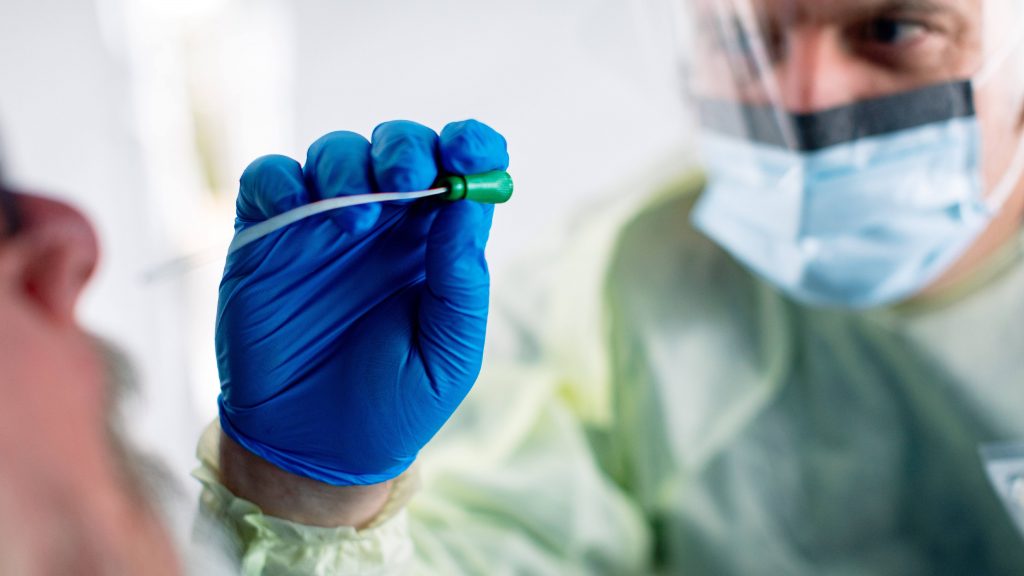-
Featured News
Mayo Clinic expert discusses how COVID-19 is monitored

When someone is infected with SARS-CoV-2, the virus that causes COVID-19, they can feel a variety of different ways. Some people will be completely asymptomatic, while others will have symptoms, and some can even become severely ill. Many people with symptoms will have fever, chills, sweats, body aches, and a feeling like they have the flu.
Depending on the severity of symptoms, some patients with COVID-19 will experience shortness of breath and will need hospital support for their breathing or their blood pressure control.
Dr. Stacey Rizza, a Mayo Clinic infectious diseases expert, answers some questions on how someone with COVID-19 can monitor their health at home and when they should seek more care at a hospital.
Watch: Dr. Stacey Rizza discuss how COVID-19 is monitored.
Journalists: Sound bites with Dr. Stacey Rizza are in the downloads at the end of the post. Please courtesy "Stacey Rizza M.D. / Infectious Diseases / Mayo Clinic."
"People should maintain the isolation so they don't infect others and then just monitor their general health. If somebody is still able to breathe comfortably, if they're still able to eat or at least drink enough that they can maintain their hydration and nutrition, and they're still able to get up and mobilize themselves and do their normal activities, then they can stay home and ride out the illness in the comfort of their own home.
"But if it gets to the point where they're struggling to breathe or they're unable to drink and maintain their hydration or eat enough for their nutrition, then they should come into the hospital setting and be monitored or evaluated for whether they need more intensive medical care," says Dr. Rizza.
How to mitigate the risk of spreading COVID-19
To dramatically decrease the amount of SARS-CoV-2 spread person to person and in communities, Dr. Rizza recommends following the four measures of protection.
"It's the four layers of protection that can help prevent spread from others: universal masking, whenever people are inside in public places or outside in conjugated areas.
"Social distancing, which means staying at least 6 feet from other people because we know those droplets can go up to 6 feet and if everybody stays at least 6 feet apart they're unable to have a droplets land upon them.
"Disinfecting high-touch surfaces, which are places that many people in the public would touch, such as doorknobs, sink faucets, hand railings, places that many people will be touching.
"And then very importantly, is hand hygiene. If people wash their hands whenever they come in from a public place, wash their hands before taking their mask off, then their hands are clean no matter what they touched before they take their mask off and have the potential of touching their own face. Those four measures are very important and effective at preventing the spread of SARS-CoV-2," says Dr. Rizza.
"We appreciate how everybody is following these measures. There are no frontline workers anymore; every person on planet earth is the front line. Every person on planet Earth has the ability to stop the spread of SARS-CoV-2 by following these measures and we just thank everyone for doing it and encourage you to keep it up."
Information in this post was accurate at the time of its posting. Due to the fluid nature of the COVID-19 pandemic, scientific understanding, along with guidelines and recommendations, may have changed since the original publication date.
For more information and all your COVID-19 coverage, go to the Mayo Clinic News Network and mayoclinic.org.







